Common Name(s): Cocuswood, Jamaican ebony, green ebony
Scientific Name: Brya ebenus
Distribution: The Caribbean (primarily Jamaica and Cuba)
Tree Size: 20-30 ft (6-10 m) tall,
3-6 in (8-15 cm) trunk diameter
Average Dried Weight: 72 lbs/ft3 (1,160 kg/m3)
Specific Gravity (Basic, 12% MC): 0.92, 1.16
Janka Hardness: 3,720 lbf (16,550 N)
Modulus of Rupture: No data available
Elastic Modulus: No data available
Crushing Strength: No data available
Shrinkage: No data available; reported to be very stable with minimal shrinkage
Color/Appearance: Heartwood is medium to dark reddish brown, sometimes with an olive-green hue, with darker brown streaks. Overall color tends to darken with age. Sharply demarcated sapwood is pale yellow.
Grain/Texture: Grain is usually straight or slightly wavy. Fine, even texture with good natural luster.
Rot Resistance: Rated as durable to very durable.
Workability: Despite its high density, cocuswood is easy to work. However, several antioxidant compounds have been found in the wood[1]Hausen, B. M., Bruhn, G., & Koenig, W. A. (1991). New hydroxyisoflavans as contact sensitizers in cocus wood Brya ebenus DC (Fabaceae). Contact Dermatitis, 25(3), 149-155. which suggests that reactive finishes may have difficulty curing. The wood has a tendency to check during initial drying, but is stable once dried.
Odor: No characteristic odor.
Allergies/Toxicity: Although severe reactions are quite uncommon, cocuswood has been reported to cause skin irritation. See the articles Wood Allergies and Toxicity and Wood Dust Safety for more information.
Pricing/Availability: Exports are nearly non-existent. Because of past exploitation, samples and turning blanks are exceptionally rare, and are likely to be very expensive. Due to the very small size of the tree (closer to a shrub in many instances), pieces are of modest size and usually include sapwood.
Sustainability: This wood species is not listed in the CITES Appendices or on the IUCN Red List of Threatened Species. However, due to intense exploitation in previous centuries, for all intents and purposes, cocuswood has been commercially exhausted.
Common Uses: Turned objects, woodwinds (clarinets, flutes, oboes, bagpipes, etc.), carvings, inlays, and other small specialty items.
Comments: Because of this wood’s great density and hardness, coupled with its coloration, cocuswood has sometimes been referred to as Jamaican or green ebony. In tree form it is more commonly known as the Jamaican rain tree. (Additionally, the wood has also been called by the vague common name granadillo—along with about a dozen or so other wood species.)
Traditionally, cocuswood has been considered one of the very finest of tonewoods, used extensively for woodwind instruments in the 1800s. Today, the preferred tonewood for woodwinds has largely been superseded by African blackwood (Dalbergia melanoxylon).
Images: Drag the slider up/down to toggle between raw and finished wood.
Identification: See the article on Hardwood Anatomy for definitions of endgrain features.
Porosity: diffuse porous
Arrangement: solitary and radial multiples
Vessels: medium to large, few to moderately numerous; dark brown deposits common
Parenchyma: diffuse-in-aggregates, vasicentric, and banded
Rays: narrow; close spacing
Lookalikes/Substitutes: Resembles true rosewoods, particularly the heavier species with similar density, such as kingwood (D. cearensis) and African blackwood (D. melanoxylon). However, cocuswood lacks the distinct odor (while being worked) that is present in most Dalbergia species. True ebonies (Diospyros genus) can also be confused with cocuswood—again, ebonies have a distinct odor when being worked which cocuswood lacks. Additionally, most ebonies will generally have reticulate parenchyma (very consistent parenchyma bands which form a net-like pattern with the rays), while cocuswood’s bands tend to be more broken and intermittent.
Notes: Ripple marks present due to storied rays.
In addition to Brya ebenus, cocuswood has also been harvested from the closely related B. buxifolia found in Haiti and the Dominican Republic.[2]Record, S. J., & Hess, R. W. (1947). Timbers of the new world (p. 238). Yale University Press. There are also about a half dozen other lesser-known Brya species, none of which yield commercial timber.
Although Fabaceae is a large and diverse family, Pterocarpus and Centrolobium are two genera yielding commercial timber species that are most closely related to Brya.[3]Cardoso, D. B. O. S., Pennington, R. T., de Queiroz, L. P., Boatwright, J. S., Van Wyk, B. E., Wojciechowski, M. F., & Lavin, M. (2013). Reconstructing the deep-branching relationships of the … Continue reading
Related Content:
References[+]
| ↑1 | Hausen, B. M., Bruhn, G., & Koenig, W. A. (1991). New hydroxyisoflavans as contact sensitizers in cocus wood Brya ebenus DC (Fabaceae). Contact Dermatitis, 25(3), 149-155. |
|---|---|
| ↑2 | Record, S. J., & Hess, R. W. (1947). Timbers of the new world (p. 238). Yale University Press. |
| ↑3 | Cardoso, D. B. O. S., Pennington, R. T., de Queiroz, L. P., Boatwright, J. S., Van Wyk, B. E., Wojciechowski, M. F., & Lavin, M. (2013). Reconstructing the deep-branching relationships of the papilionoid legumes. South African Journal of Botany, 89, 58-75. |

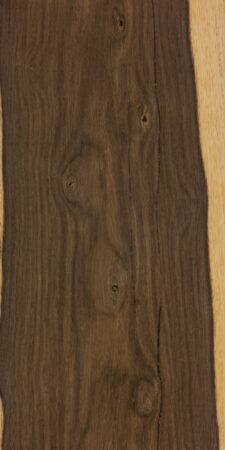
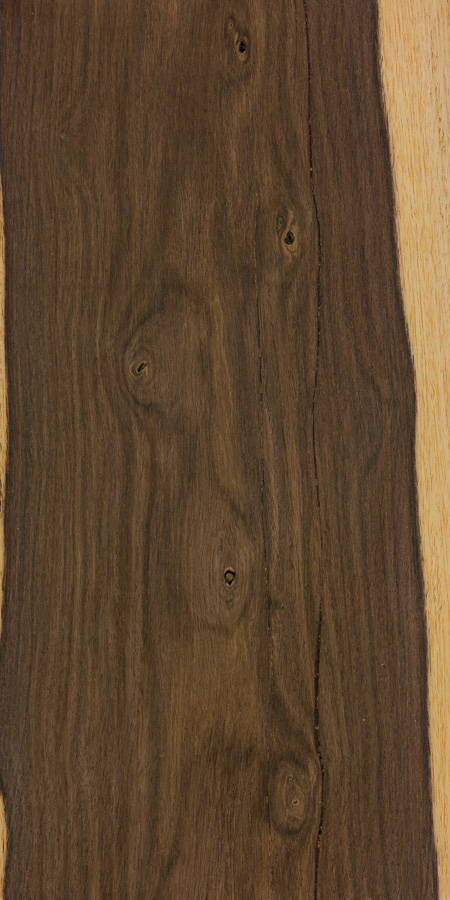
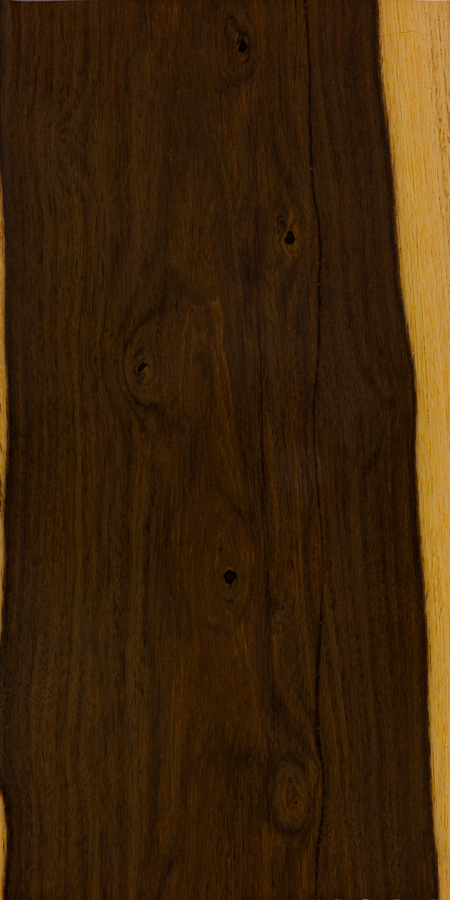
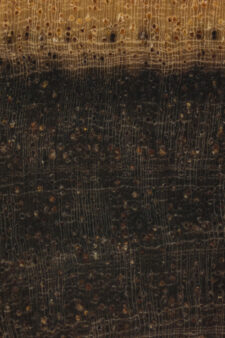

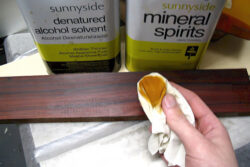
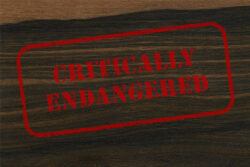
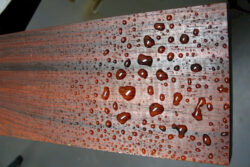



Cocuswood from my collection. Hard and heavy with density ~1.25. Takes polish like glass.
My only piece of cocuswood.
Because of it’s hardness, weight, and reported ease of workability, Cocuswood is a perfect candidate for making turkey call strikers and has been used to make turkey call trumpets.
Can this wood be used for making cutting boards?
Also, what about carving spoons?
The data lists Janka Hardness as 3,720 lbf (16,550 N). In my experience, wood for cutting board use is best chosen from species with a Janka hardness of less than 2,000 lbf., harder woods may be destructive to edges of good kitchen knives.
Also, this is a smaller tree, yielding smaller blocks or boards and has low availability, it would make for a VERY expensive cutting board!